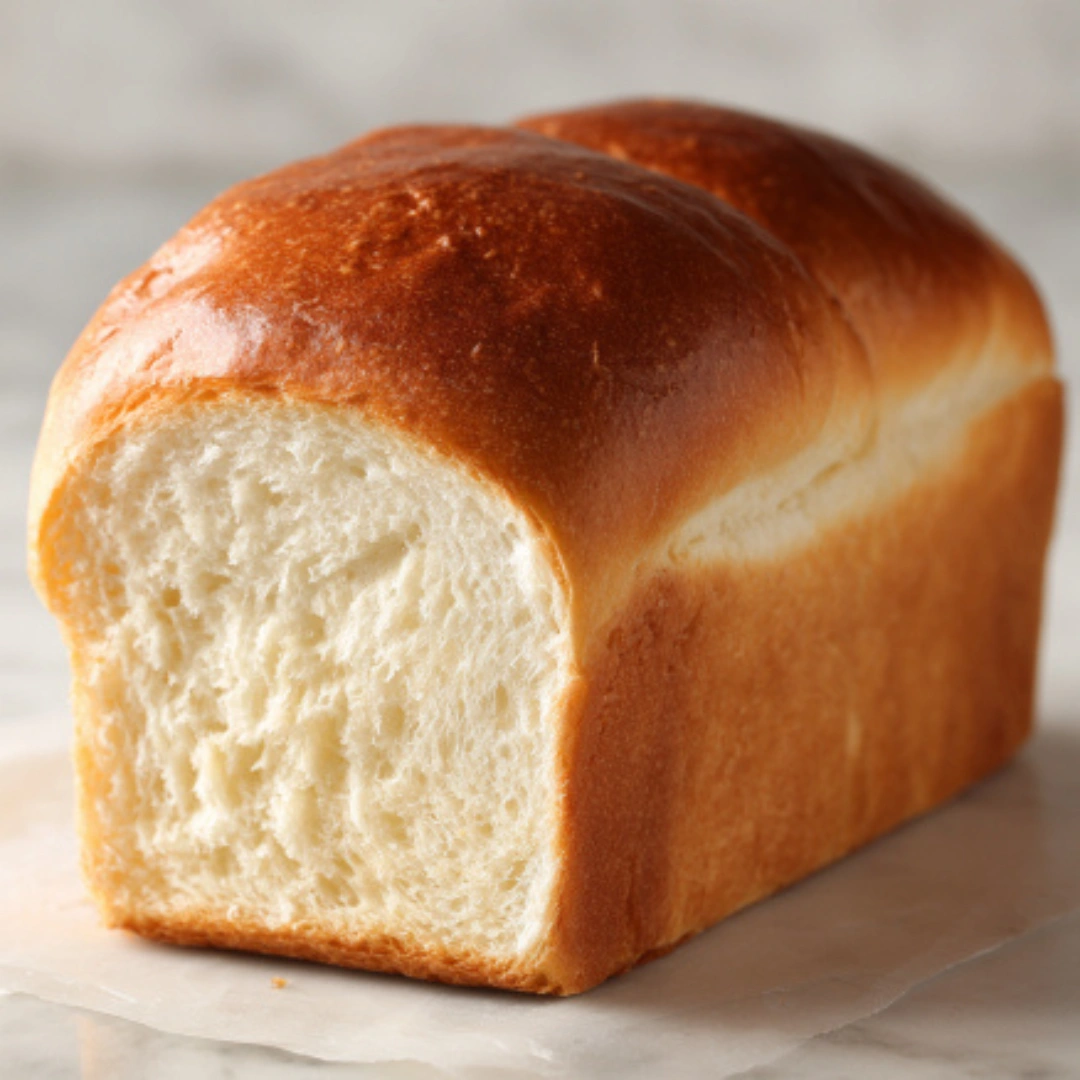If you’ve ever wanted to enjoy soft, fresh, homemade bread that’s perfect for sandwiches or toast, this sandwich bread recipe is exactly what you need. With just seven simple ingredients, you can create a loaf that’s tender, flavorful, and irresistible. Forget about store-bought bread with preservatives or strange additives—you can make a wholesome, fresh loaf in your own kitchen anytime. The process may seem detailed at first, but once you get the hang of it, baking bread becomes a satisfying and fun routine.
Why We Love This Sandwich Bread Recipe
You’ll quickly discover why this sandwich bread recipe is so loved by home bakers. First, it’s extremely simple to make. With only seven ingredients, most of which you already have in your pantry, there’s very little preparation work involved. Even if you’ve never baked bread before, you’ll find this method approachable and forgiving.
Second, it delivers consistently soft and fluffy results. The combination of warm water, milk, butter, and sugar feeds the yeast perfectly, giving you a light texture that’s easy to slice and perfect for sandwiches. The bread rises beautifully in two stages, giving it a tender crumb without being dense or heavy.
Finally, it’s versatile and customizable. Once you master the basic loaf, you can add seeds, herbs, or other flavorings to create your signature sandwich bread. You control the ingredients, ensuring freshness, flavor, and nutrition in every slice. This bread is also ideal for freezing, making it convenient for busy weeks when you need a quick homemade option.
Ingredients for Sandwich Bread
To make this soft, homemade sandwich bread, you’ll need the following ingredients:
- ¾ cup warm water (105–115°F)
- 2 ¼ teaspoons active dry yeast
- ½ cup warm whole milk
- ¼ cup melted butter
- 2 tablespoons sugar
- 1 teaspoon salt
- 3 ½ cups all-purpose flour or bread flour
How to Make Sandwich Bread
- Activate the yeast
Begin by combining the active dry yeast with warm water and about a teaspoon of sugar. Let it sit for five minutes until it becomes foamy. This step confirms that your yeast is active and ready to work. - Mix wet ingredients
In a separate bowl, combine warm milk, melted butter, the remaining sugar, and salt. Stir these together using a wooden spoon until fully incorporated. - Combine with flour
Attach a dough hook to your stand mixer. Add half of the flour to the wet mixture and mix at low speed until moistened. Gradually add the remaining flour, mixing first at low speed, then increasing to medium until the dough forms a smooth ball. - Knead the dough
Continue kneading the dough in the mixer for 2–3 minutes until it’s smooth, elastic, and cleans the sides of the bowl. Proper kneading is key to developing the gluten, which gives the bread its soft, airy texture. - First rise
Shape the dough into a ball and place it in a lightly greased bowl. Cover it with a towel or plastic wrap and let it rise for about 1½ hours, or until it doubles in size. This stage allows the yeast to create air pockets, giving the bread its fluffy structure. - Shape the loaf
Once risen, gently deflate the dough on a lightly floured surface. Roll it into an 8×14-inch rectangle, then roll it tightly to form an 8-inch log. Place the dough into a greased 9×5-inch loaf pan. - Second rise
Cover the loaf pan and let the dough rise again for 1 hour, or until it has extended about 1½ inches above the rim. This ensures a nicely rounded, even loaf. - Bake
Preheat your oven to 350°F, positioning the rack on the second-lowest level. Bake the bread for 25–27 minutes. The loaf should feel hollow when tapped, and the crust should be a beautiful golden color. Allow the bread to cool before slicing to preserve its soft texture.
How to Serve Sandwich Bread
Once baked, your sandwich bread is ready to be enjoyed in countless ways. Slice it thick for hearty sandwiches or thin for delicate toast. It pairs wonderfully with butter, jams, peanut butter, or savory spreads. You can also serve it alongside soups, salads, or stews for a comforting meal.
Warm slices straight from the oven are perfect for breakfast with a drizzle of honey or a sprinkling of cinnamon sugar. For lunch, layer with deli meats, cheese, and fresh vegetables to create your favorite sandwiches. You’ll notice the bread’s soft texture holds fillings beautifully without crumbling or falling apart, making it a reliable base for any meal.
Expert Tips for Sandwich Bread
- Temperature matters – Yeast works best in warm water and milk, but too hot liquid can kill it. Aim for 105–115°F for optimal results.
- Don’t rush the rise – Allow the dough to double in size during each rise. Patience ensures a tender crumb and soft texture.
- Use the right flour – Bread flour gives a chewier texture and better structure, while all-purpose flour makes a softer, lighter loaf. Choose based on your preference.
- Knead properly – Kneading develops gluten, which gives the bread elasticity and strength. Under-kneaded dough can lead to dense loaves.
- Check doneness – Tap the top of the bread. A hollow sound means it’s fully baked. A golden-brown crust indicates proper caramelization.
- Experiment with flavors – Add herbs, garlic, or seeds for a creative twist on your basic loaf.
- Avoid overbaking – Baking too long dries the bread, so remove it when golden and hollow-sounding.
How to Store Sandwich Bread
To maintain freshness, store your bread at room temperature in a tightly sealed bag or container for up to four days. For longer storage, refrigeration extends life up to a week, but may slightly dry the bread.
Freezing is a great option if you want to make ahead. Wrap the baked loaf in plastic, then in foil, and store it for up to one month. Thaw at room temperature and refresh in a warm oven if needed. You can also freeze unbaked dough in the loaf pan for up to three weeks and bake later, saving time on busy days.
Variations of Sandwich Bread
This basic sandwich bread is incredibly versatile, allowing you to customize it for different tastes and occasions. Add a handful of seeds like sunflower, sesame, or poppy for extra texture and flavor. You can also mix in herbs such as rosemary, thyme, or oregano to enhance savory dishes.
For a sweeter twist, try incorporating a small amount of honey or maple syrup in place of sugar, or fold in dried fruits like raisins or cranberries. Cheese can also be kneaded into the dough for a rich, savory loaf. You can experiment with whole wheat or multigrain flour for a heartier option while maintaining the soft, fluffy texture that makes this bread so popular.
Frequently Asked Questions About Sandwich Bread
Can I make this bread without a stand mixer?
Yes! You can knead the dough by hand. Mix the wet and dry ingredients, then knead on a lightly floured surface for 8–10 minutes until smooth and elastic.
How long does homemade sandwich bread last?
At room temperature, it lasts up to 4 days when stored in a sealed bag. Refrigerated, it lasts up to a week. Freeze for up to a month for longer storage.
Can I use this recipe for rolls instead of a loaf?
Absolutely! Divide the dough into equal portions, shape into balls, and place on a greased baking sheet. Bake at 350°F for 20–25 minutes until golden.
Why is my bread dense instead of soft?
Dense bread usually results from insufficient rising time, under-kneading, or overly heavy flour. Make sure your yeast is active and allow the dough to rise fully.
Can I substitute milk with plant-based milk?
Yes! Almond, soy, or oat milk work well and will not affect the rising process significantly. Make sure it’s warm when adding to the dough.
Can I make this bread ahead of time?
Yes! Refrigerate the dough after the first or second rise, then continue with the recipe the next day. You can also freeze baked or unbaked bread for later use.

Sandwich Bread
Equipment
- 9×5 inch Loaf Pan
- Mixing Bowls:
- Stand mixer with dough hook
Ingredients
- 3/4 cup warm water (105–115°F)
- 2 1/4 teaspoons active dry yeast
- 1/2 cup warm whole milk
- 1/4 cup melted butter
- 2 tablespoons sugar
- 1 teaspoon salt
- 3 1/2 cups all-purpose flour or bread flour
Instructions
- Combine yeast with warm water and 1 teaspoon of sugar. Let sit for 5 minutes until foamy.
- In a separate bowl, mix warm milk, melted butter, remaining sugar, and salt.
- Using a stand mixer, add half the flour to the wet mixture and mix at low speed.
- Gradually add the remaining flour, mixing first at low speed, then medium, until a smooth ball forms.
- Knead the dough in the mixer for 2–3 minutes until smooth and elastic.
- Shape the dough into a ball and let it rise in a greased bowl covered with a towel for about 1½ hours, until doubled in size.
- Deflate the dough on a floured surface, roll it into an 8×14-inch rectangle, and roll tightly into an 8-inch log.
- Place in a greased 9×5-inch loaf pan, cover, and let rise for 1 hour until it rises about 1½ inches above the rim.
- Preheat the oven to 350°F. Bake for 25–27 minutes until golden and hollow when tapped.
- Cool before slicing to preserve softness.
Send me this recipe!
Just enter your email below and get it sent straight to your inbox!



